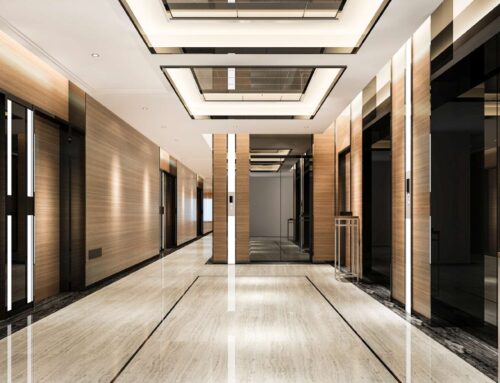Wildfire Resilience for Commercial Properties: Fire Protection Strategies for California & Colorado
Wildfires are an ever-growing threat in California and Colorado, where commercial properties face increasing risks due to climate change, drought conditions, and expanding urban development. Fire protection engineering is critical in safeguarding businesses, ensuring compliance with local regulations, and enhancing building resilience against wildfires.
In this guide, the fire protection engineers at Zari Consulting Group share essential fire mitigation strategies to help commercial property owners in wildfire-prone areas reduce risk, improve fire safety, and meet WUI (Wildland-Urban Interface) regulations.
Understanding the Wildfire Threat in California and Colorado
California’s Wildfire Landscape
California experiences some of the most destructive wildfires in the country, driven by high temperatures, dry vegetation, and strong Santa Ana winds. To reduce fire risk, California enforces rigorous building codes under the California Fire Code (CFC) and the Wildland-Urban Interface (WUI) Building Standards (Chapter 7A).
Colorado’s Wildfire Challenges
Colorado has seen an increase in wildfires due to rapid urban development in wildfire-prone areas like the Front Range, Boulder, and Colorado Springs. To ensure wildfire preparedness, Coloradans must follow guidelines set by the Colorado State Forest Service (CSFS) and NFPA 1144.
Fire Protection Strategies for Commercial Buildings in Wildfire Zones
1. Defensible Space: Creating a Fire-Resistant Perimeter
A defensible space is a critical buffer zone around a building that slows wildfire spread and reduces fire intensity. Both California and Colorado enforce defensible space requirements based on vegetation clearance zones.
- Zone 1 (0-5 feet): Use non-combustible materials like gravel or concrete instead of mulch. Keep shrubs and trees away from the building.
- Zone 2 (5-30 feet): Maintain low-growing, fire-resistant plants and space trees at least 10 feet apart.
- Zone 3 (30+ feet): Create a firebreak with well-maintained vegetation and fire-resistant landscaping.
Regulatory Tip: CAL FIRE’s defensible space requirements (PRC 4291) mandate at least 100 feet of clearance around buildings in California. In Colorado, local fire codes often follow similar NFPA 1144 recommendations.
2. Fire-Resistant Building Materials & Design
Commercial properties in wildfire-prone areas must incorporate fire-resistant construction materials that comply with WUI building codes.
- Roofing: Use Class A fire-rated roofing materials, such as metal, clay tiles, or asphalt shingles.
- Exterior Walls: Opt for non-combustible materials like stucco, brick, or fiber cement.
- Windows & Doors: Install multi-pane tempered glass to prevent heat-related breakage.
- Vents & Eaves: Use ember-resistant vent screens to prevent embers from entering buildings.
Regulatory Tip: The California WUI Code (Chapter 7A) requires all new buildings in wildfire zones to use fire-resistant construction materials.
3. Advanced Fire Suppression Systems
Fire suppression technology is essential for protecting commercial buildings from both internal fires and external wildfire threats.
- Automatic Sprinkler Systems: Required by NFPA 13, sprinklers prevent fire spread and cool surfaces.
- Water Storage Tanks & Fire Pumps: Ensure an independent water source in case municipal supplies fail.
- Foam-Based Fire Suppression Systems: Effective for protecting large commercial properties near high-risk wildfire zones.
- Fire-Resistant Coatings & Retardants: Apply intumescent paints and fire-retardant treatments to exterior surfaces.
Regulatory Tip: Many counties in California and Colorado require on-site water storage or fire department access points in wildfire-prone areas.
4. Smoke & Ember Protection Measures
Embers can travel miles ahead of a wildfire and ignite buildings long before the main fire reaches the area. Implement these protection strategies:
- Gutter Guards & Fire-Resistant Screens: Prevent ember buildup in roof gutters.
- Automatic Fire Shutters: Close off windows and doors in the event of an approaching wildfire.
- Sealing Gaps & Vents: Minimize ember entry points in attics and crawl spaces.
Case Study: After the Marshall Fire in Colorado (2021), businesses that had fire-resistant vents and closed eaves had significantly lower fire damage than those without protection.
5. Emergency Preparedness & Fire Response Planning
A well-designed fire response plan ensures businesses can act quickly in an emergency.
- Evacuation Routes & Fire Drills: Regularly update emergency exit plans and conduct fire drills.
- Fire Breaks & Buffer Zones: Implement additional fuel break strategies near large commercial properties.
- On-Site Firefighting Equipment: Maintain fire extinguishers, hoses, and mobile water tanks for rapid response.
- Monitoring and early Detection Systems: Use remote wildfire sensors, air quality monitors, and early warning alerts.
Regulatory Tip: Many jurisdictions in California and Colorado require businesses to submit a Fire Protection Plan (FPP) as part of their building permit process.
Why Partner with Zari Consulting Group for Fire Protection Engineering?
At Zari Consulting Group, we specialize in fire protection design, risk assessment, and compliance consulting for commercial properties in California and Colorado. Our expertise includes:
- Wildfire mitigation planning tailored to your building and location
- Fire suppression system design to meet NFPA, state, and local codes
- Smoke control and ember protection solutions for high-risk areas
- Compliance assistance for navigating complex fire codes
With a proven track record of working on large-scale commercial projects, we help building owners, architects, and contractors implement the most effective fire protection measures while ensuring full regulatory compliance.
Need expert fire protection solutions for your commercial property?
Contact Zari Consulting Group today to schedule a fire protection consultation for your business in California or Colorado.
Final Thoughts
Wildfire resilience is not just about compliance—it’s about protecting lives, assets, and businesses from one of the most devastating natural disasters. Commercial property owners in California and Colorado can significantly reduce their wildfire risk by incorporating fire-resistant construction, advanced suppression systems, and proactive emergency planning.
For expert guidance on fire protection engineering in wildfire-prone areas, contact Zari Consulting Group to develop tailored fire mitigation strategies to optimize your fire prevention infrastructure.
Stay ahead of wildfire threats. Contact us today!




